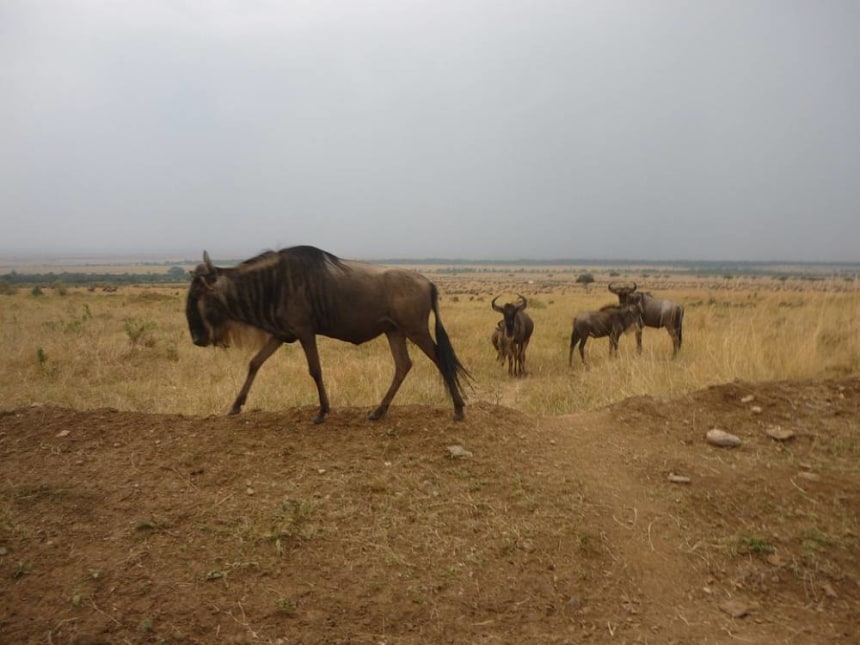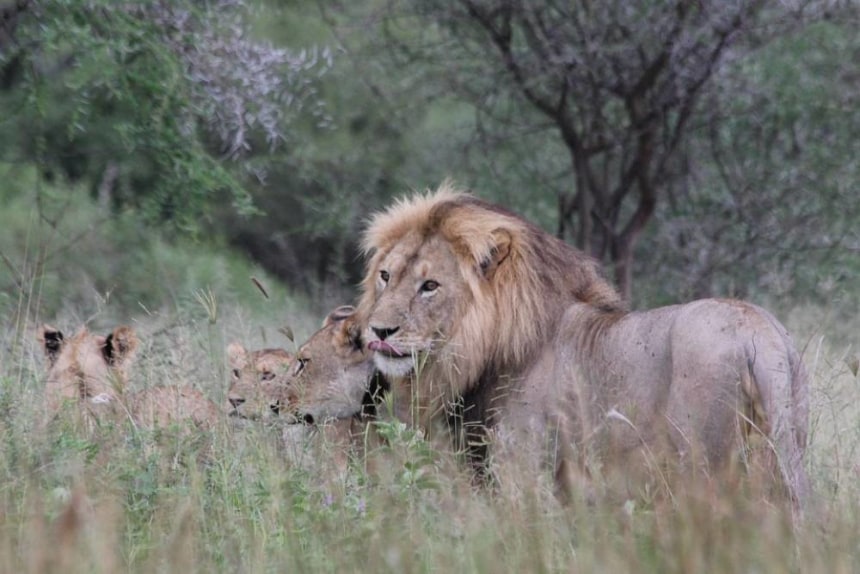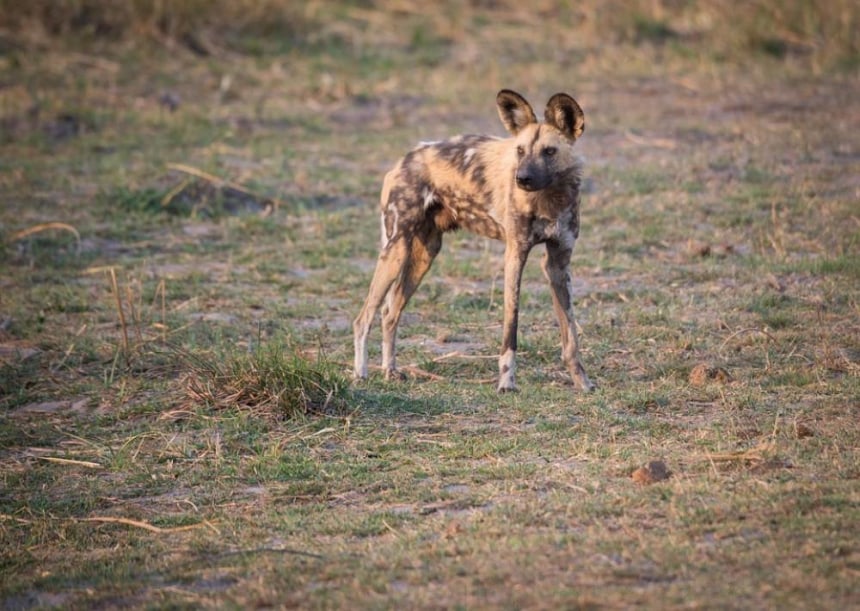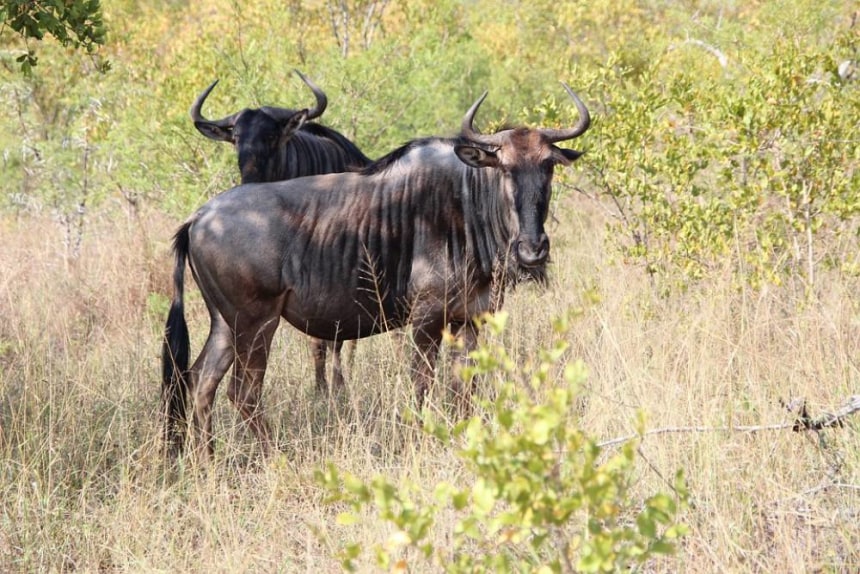
Planning a migration safari can be tricky; the wildlife is on the move after all! However, with a little help from us, you will hopefully be able to figure out where you should be at what time and where it is best to stay.
The wildebeest migration covers a huge area of the Serengeti-Masai Mara ecosystem, and despite the varying weather, putting together a migration specific itinerary is not as difficult as one may at first think. Knowing the best location for specific times of year is of paramount importance. The exact route of the migrating herbivores depends on the weather and where the grass is greener, be it in Kenya or Tanzania. However, the migration does tend to follow the same, or a similar, pattern year after year, which means that you can have a good idea of where to locate yourself. Each area is good at different times of the year, for Serengeti, seeing the migration is around nine months and for Mara, it is just three.
The river crossing is one of the main events that people wish to see; this is where thousands of wildebeest battle with each other, and the crocs, move on to the best grazing plains.
The first of these crossings is that of the Grumeti River in Western Serengeti, which happens around mid-May to June. The second, and perhaps the most famous, is that of the Mara River during August and September. The crossings are hugely exciting to witness, and a must if you want some action! However, the mass herds move through the Serengeti-Masai Mara ecosystem throughout the year, and therefore travelling at any time of the year will provide viewing of vast amounts of game. February, for example, is a fantastic time to travel to the Southern Serengeti as this is the time of year when thousands of wildebeest begin to give birth; this is an incredible sight to witness, and the big cats are often seen in the area at this time.
We’ve added in some maps which should give you the best idea of where to be and when. Along with where and when to travel, we have listed some of the best lodges in the area to give you access to the migration. Where your stay will have a great impact on your experience during the migration. Of course the Serengeti-Masai Mara is extremely popular, and it does get extremely busy. Having well-trained, professional guides is the most important part of a migration safari. The guides will be trained to know the movements of the wildlife, where they are positioned, and the best location for photography too.
To start with Tanzania…… Mobile tented safaris are a great way to follow the migration in Tanzania. The tented safaris follow the migration as it moves, and stop at private campsites whilst the migrating herds are still moving. There are also some fantastic permanent lodges where you can base yourself whilst you head out to explore the Serengeti.
Throughout January and February, following the rains, the migration moves onto the Serengeti plains in the south, where the newborns graze alongwith the herds. This is also the time for the predators to fatten up. With thousands of young, it is an easy picking for cheetahs and lions, and the hyenas make the most of this abundance of food by picking up what remains of the cats’ kills, as well as picking off their own fresh meals. At this time of year, being located in the Ndutu area will give you the best access to the migration. Our favourites would be Olakira and the Ndutu Safari Lodge.
Olakira is a mobile tented camp which moves through the Serengeti, staying close to the Great Migration. Wildlife viewing from the camp itself can be spectacular, and game drives offer one of the best opportunities to see the migrating herds as well as the ‘Big Five’. Ndutu Lodge has to be one of the best bases to observe the wildlife in the area. Situated among giant acacia trees next to Lake Ndutu, this simple and comfortable lodge is a great migration safari location, although it can be quite noisy, with herds literally passing through the lodge!
March to April is when the heavy rains set in and the migration begins to move through the Central Serengeti and towards the Western Serengeti, where the long grasses are new and the food is good. This is a beautiful time to travel: flowers cover the Central Serengeti and there are very few people around. However, it being the rainy season, you need to be prepared. Also, the roads get muddy, and therefore access to some of them may be limited. During this time, staying in the Ndutu or Seronera areas will put you in the right place for the migration. Again, Olakira is a great base to explore the Central Serengeti, as is Dunia Camp.
Dunia Camp has access to the best that the Southern and Central Serengeti has to offer – the Ndutu area, Southern Plains, Moru Kopjes, and Central Serengeti Valley. The migratory wildebeest and zebra share the land with elephant, giraffe, Thomson gazelle, and a host of other wildlife, including the big cats, with lion prides and cheetah frequently sighted. Staying here during this time will not only give you prime access to the migration, but as this is shoulder season, it will also be quieter in the Serengeti, meaning that there will be relatively few other safari vehicles around.
As the dry season approaches during May and June, the migrating herds begin moving once again, this time towards the Grumeti River, where the crocodiles wait for an easy meal. Seeing the thousands of wildebeest crossing the river is a sight not to be missed, and has to be one of the highlights of a Wildebeest Migration safari. Being located near the Grumeti River is ideal at this time. However, being in the Seronera and Western Serengeti area will also give you fantastic access. Faru Faru Lodge and the Grumeti River Camp are ideal bases for access to the migration at this time.
Faru Faru’s setting on the riverside gives the lodge access to great wildlife viewing. Its location, on a slope with elevated viewing decks overlooking a watering hole, means that you can simply sit back, relax, and watch the game without even leaving the comfort of the lodge! The Grumeti Serengeti Tented Camp sits in an area of the Serengeti rich in wildlife, and during these months, the great migration passes through the area, meaning you may witness the river crossings.
July is one of the most exciting months of the great migration as the herds move further into the Northern Serengeti and toward the Mara River. At this time of year, you can witness thousands of wildebeest battling their way through the waters and trying to avoid the crocodiles. The best place to be is in the Northern Serengeti or across the river in the western part of the Masai Mara. Olakira once again is a good option (having moved from the Southern Serengeti), as is Sayari Mara Camp. Cheaper and/or alternative accommodation can however be arranged on request since most of these get fully booked at these times.
Sayari sits in a beautifully peaceful area of the Serengeti surrounded by hills and rolling plains, which makes for some fantastic views if you can see past the migrating herds! Being situated on the Mara River in the remote Northern Serengeti means this is an ideal spot from which to watch the river crossings.
After the excitement of the river crossings, the migrating herds settle, for a while, in the Masai Mara in Kenya. The Mara is an amazing area of rolling savannah hills cut through with dark green riverine forest areas, making this the perfect habitat for a whole host of wildlife. The rich grasslands support the herds throughout August and September. Their arrival means a time of plenty for the big cats, and you are guaranteed of some great action. Rekero Camp and Main Governors Camp are two of the best camps to stay at, as both have fantastic access to the crossing points on the river. Cheaper and/or alternative accommodation can however be arranged on request since most of these get fully booked at these times.
Rekero Camp is a seasonal camp, which is set up between June and March, and it provides some of the best game viewing during that period. Owned and run by Gerard Beaton and Jackson of Big Cat Diary fame, this camp is renowned for its unbeatable guiding. Main Governors Camp is set in the heart of the Masai Mara, giving you fantastic access to some of the best game and bird-viewing in Africa. Located near to the Mara River, the camp affords spectacular views across waterways and expansive plains, and you will be in the ideal spot for the river crossing.
As the rain clouds start to build, the wildebeest begin their journey south, anticipating the rains. They slowly make their way east through the Masai Mara and back down into the Serengeti National Park.
The ideal base during October would be in the south-eastern area of the Masai Mara or in the north-eastern Serengeti. Olakira once again is a great camp at this time, as is Sayari Mara Camp. Our guides are fantastic, and their experience of working in the area will ensure that you are in the right spot.
This area comes into its own during the months of September and October, and is the best place for a safari in Tanzania when the wildebeest migration moves southwards through Lobo and down to the Serengeti plains. Lobo encompasses the Mara and Grumeti Rivers, which are bordered by acacia woodlands. It is less visited, and therefore less crowded, than other areas of the Serengeti, which means that you one can potentially spend a full day in the middle of the migration without seeing another vehicle.
As the short rains begin in November, the migration moves quickly south towards the Loliondo area of the Serengeti. The Loliondo area is part of the much larger Serengeti ecosystem, and is on land owned by the Maasai. The area offers a great mix of resident game, and is an excellent walking country, with dramatic scenery of open plains, rock kopjes, and woodlands. Whilst the migration is here, staying at Migration Camp or Piyaya will put you in the right place for the huge herds.
Set in the game-rich Lobo region of the Serengeti, Migration Camp is perfectly placed: whether you are on a game drive, or at the lodge, the wildlife viewing here is excellent. Even from the comfort of your tent, you can almost guarantee you will see something: each tent has 360 degree private decks! Piyaya Camp is seasonal, and is located in a part of Loliondo bordering the Serengeti. Set in a spectacular landscape, the camp provides unspoilt views of the Gol Mountains and the deep Sanjari Gorge, as well as the possibility of sighting the elusive wild dogs, or “suyan” as they are called locally. A stay at this camp gives you ideal access to the migration as well as some beautiful scenery.
As December nears, the migration settles on the short grass plains in the Southern Serengeti. At this time of year, the migration tends to stay around the Seronera and Ndutu area as Seronera provides a constant source of water for the herds. During December you have the privilege of seeing thousands of wildebeest and zebra gathering on the southern plains as the migration gets underway. This is great time to see a huge variety of game as the big cats follow the feast. As with the months or January and February, being based at Olakira or Ndutu Safari Lodge will put you in the right place to see the vast herds. The Ndutu area consists of endless grass plains, which keep going for as far as the eye can see, and the plains are at their best during December as the grass is green and the wildlife is plenty.
Now whilst you may have a better idea of the migration movements, the concentration of game is not always as one may expect. You must bear in mind that the huge herds are spread out over the Serengeti-Masai Mara ecosystem, and they may not always be in close proximity to one another. Even if the herds are slightly spread out, being amongst them is still an incredible experience.
If you are interested in travelling to the Serengeti or Masai Mara to witness the great migration, or if you would like some more information on where to stay and what we can offer, do feel free to talk to us and one of our safari experts would be more than happy to help.









